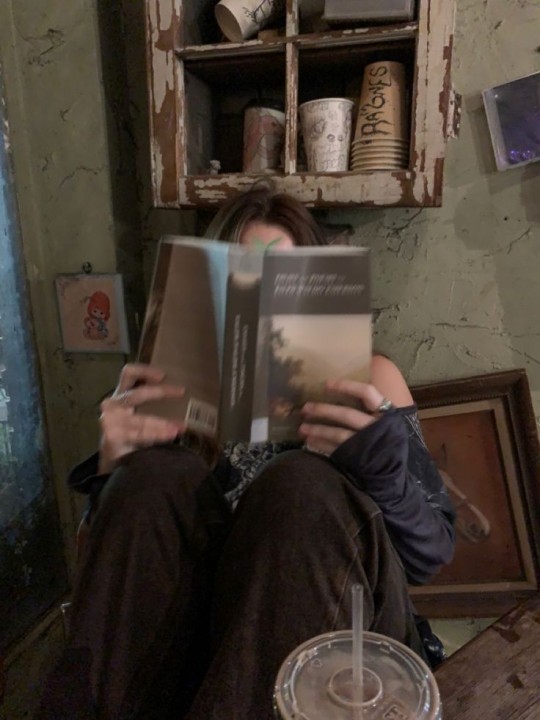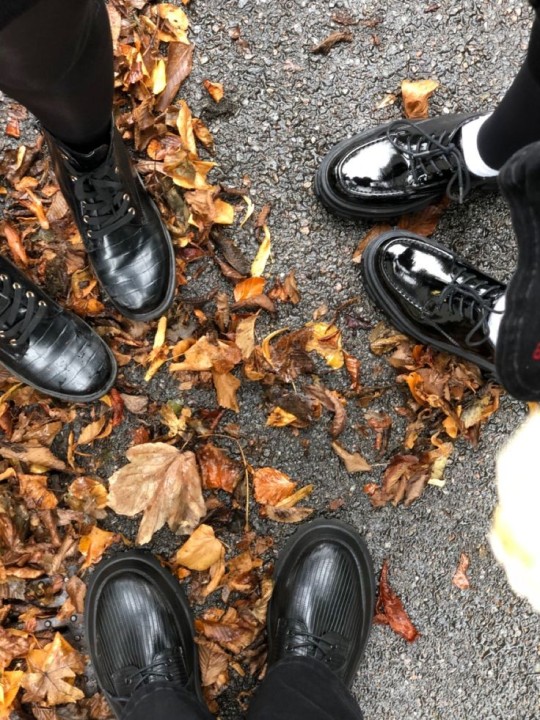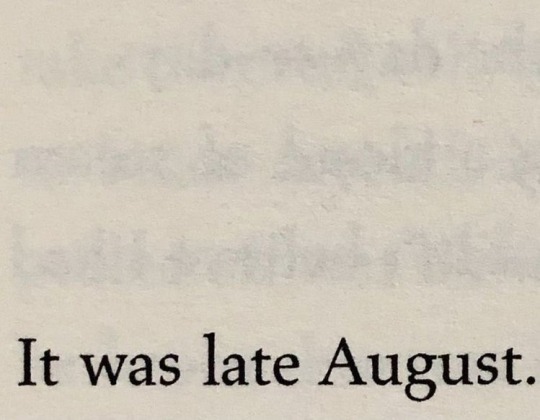#AUGUST SLIPPED AWAY INTO A MOMENT IN TIME
Explore tagged Tumblr posts
Text

Exhibition 1793-1794 at the Carnavalet Museum (Part I)
For anyone interested in the French Revolution, a visit to the Carnavalet Museum is essential. Though the museum covers the history of Paris from its very beginnings to the present, it’s also home to the world’s largest collection of revolutionary artefacts. Which makes sense, given that Paris was the epicentre of it all.
Frankly, if you plan to explore it all, you’ll want to set aside a good 3–4 hours. For those focused solely on the French Revolution, head straight to the second floor, where you can get through the collection in under an hour. Best of all, the permanent collection is free, making it a brilliant way to spend an afternoon in the city on a budget.
Currently, though, there’s a special treat on offer. Running from 16 October 2024 to 16 February 2025, the museum is hosting an exhibition dedicated to my favourite (and arguably the most chaotic) year of the revolution: Year II (1).
Now, since the family and I were in Reims for a long weekend, I somehow managed (possibly after too much Champagne) to convince my husband to drive 150 kilometres to Paris just so I could see Robespierre’s unfinished signature. It helped that the kids were on board, too. Yes, the four-year-old fully recognises Robespierre by portrait. The one-year-old is, predictably, indifferent.
So, slightly worse for wear after a ridiculous amount of Champagne tastings, off we went to the museum.

1. Why Year II?
Because it was a catastrophe. No. Really. Let me explain, in a very overly-simplified summary:
In Year II, France was plunged into an unparalleled storm of internal and external crises that would define the Revolution’s most radical year and ultimately mark its turning point.
Internally, the government was riven by factional divides, economic collapse, and civil war. The Jacobins (2) took control of the Convention, sidelining the federalist Girondins (3), aligning themselves with the sans-culottes (4), and arguing that only extreme measures could preserve the Revolution. Meanwhile, the more radical Enragés (5) demanded harsh economic policies to shield the poor from spiralling inflation and food shortages. The Convention introduced the Maximum Général (6) to placate them, which capped essential prices; however, enforcement was haphazard, fuelling discontent across the country. At the same time, the Indulgents (7) called for a reduction in violence and a return to clemency.
Externally, France’s situation was equally dire, encircled by the First Coalition—a formidable alliance of Britain, Austria, Prussia, Spain, and the Dutch Republic, all intent on crushing the Revolution before it spread further. With the execution of Louis XVI, France found itself diplomatically isolated, and the army was, frankly, a shambles. Most officers were either nobles or incompetent (8), and the soldiers were inadequately trained and equipped. In a desperate bid to defend the Republic, the Convention issued the Levée en Masse (9) in August 1793, sparking revolts in many cities and outright civil war in the West.
Confronted with this barrage of existential threats, the Convention dialled up its response in spectacular fashion, unleashing what we now know as the Terror—a period of sweeping repression backed by some rather questionable legislation. As you can likely guess from the name alone, this was a brilliant idea…
Put simply: by the end of Year II, nearly all the key figures who had spearheaded the Revolution up to that point were dead. And no, they didn’t slip away peacefully in their sleep from some ordinary epidemic. They met their end at the guillotine.
In short, Year II wasn’t just the Revolution's most radical and defining phase—it was also the year the Revolution itself died. Yes, the Revolution, in its truest, purest, most uncompromising form, met its end the moment the guillotine's blade struck Robespierre’s neck.
2. Overview of the exhibition
The visit opens with the destruction of the 1791 Constitution and closes with Liberty, an allegorical figure of the Republic depicted as a woman holding the Declaration of the Rights of Man in her right hand. In between, the experience is structured around five main themes:
A New Regime: The Republic
Paris: Revolution in Daily Life
Justice: From Ordinary to Exceptional
Prisons and Execution Sites
Beyond Legends
More than 250 artefacts are featured, including paintings, sculptures, decorative arts, historical items, wallpapers, posters, and furniture. The layout is carefully structured around these themes, with a distinct use of colour to set the tone: the first three sections have a neutral palette, while the final two glow in vivid red, creating a very nice change in atmosphere.
What I appreciated most was how the descriptions handle the messy legacy of Year II. The texts actually admit that, while some Parisians saw this year as a bold step towards equality and utopia, for others it was an absolute nightmare. This balance is refreshing, even if things are a bit simplified (because how could they not be?), and it gives a well-rounded view of a wildly complicated time.
In this first part, I'll focus on the first two sections, as the latter three fit together neatly and deserve a deep dive of their own. Besides, there's so much to unpack that I'll likely exceed Tumblr's word limit (and the patience of anyone reading this).


3. A New Regime: The Republic
The first section covers the shift from the Ancien Régime to the First Republic, and, fittingly, it starts with a smashed relic of the old order: the Constitution of 1791. After the monarchy’s fall and the republic’s proclamation in September 1792, the old constitution was meaningless. Though it technically remained in force for a few months, it was replaced by the Constitution of Year I in 1793, marking the end of France’s brief experiment with a constitutional monarchy. In May 1793, the old document was ceremonially obliterated with the “national sledgehammer”—a bit dramatic, perhaps, but Year II was nothing if not dramatic.


This section zeroes in on the governance of the new republic, featuring the Constitution of Year I, portraits of convention members, objects from the Committee of Public Safety and the National Convention (including a folder for Robespierre’s correspondence), and national holiday memorabilia. There’s even a nice nod to Hérault de Séchelles (10) as a principal author of the republican constitution.

3.1 Martyrdom as a political tool
Interestingly, the exhibition places a heavy emphasis on the concept of martyrdom. A significant portion of this first area is dedicated to the Death of Marat (11) and, to a lesser extent, the assassination of Le Peletier (12). It’s a clever angle since martyrs—whether well-known figures or nameless soldiers—have always been handy for rallying public opinion. The revolutionary government of Year II understood this all too well and wielded the concept to its full advantage.

In this spirit, the middle of this section features a reproduction of David’s Death of Marat, several drawings from Marat’s funeral, Marat’s mortuary mask, a supposed piece of his jaw, and more. Notably absent are any issues of L’Ami du Peuple, as though the display suggests Marat’s death was more impactful to the Republic’s narrative than his actual writings. I’d agree with that—the moment he died, he was elevated to a mythic status, and his legacy as a martyr of Year II took on a life of its own.



4. Paris: Revolution in Daily Life
While the first section focuses on the workings of governance, this part delves into Year II’s impact on ordinary Parisians. This period stands out for two reasons: France was in economic and political turmoil (wars, both internal and external, aren’t exactly budget-friendly), yet it also managed to introduce some remarkably forward-thinking legislation aimed at improving the lives of the common people.

4.1 The Paris Commune & Paranoia
To understand life in Paris during Year II, we can’t overlook the role of the Paris Commune (13). Rooted in the revolutionary spirit of the Estates General of 1789 and officially formalised by the law of 19 October 1792, the Commune was the governing body responsible for Paris. Divided into forty-eight sections, each with its own assembly, it gave citizens a strong voice in electing representatives and local officials. Led by a mayor, a general council, and a municipal body, the Commune handled essential civic matters like public works, subsistence, and policing.
From 2 June 1793 to 27 July 1794 (the height of Year II), the Commune implemented the policies of the Montagnard (14) Convention, which aimed to build a social structure grounded in the natural rights of man and citizen, reaffirmed on 24 June 1793. This social programme sought to guarantee basic rights such as subsistence (covering food, lighting, heating, clothing, and shelter), work (including access to tools, raw materials, and goods), assistance (support for children, the elderly, and the sick; rights to housing and healthcare), and education (fostering knowledge and preserving arts and sciences).
All this unfolded in an atmosphere thick with paranoia and intense policing; enemies were believed to lurk everywhere. The display does a solid job of capturing this side of the Paris Commune, featuring various illustrations that urged people to conform to new revolutionary norms—wear the cockade, play your part in the social order, fight for and celebrate the motherland, and so on.


One of my favourite pieces was the record of cartes de sûreté (safety cards) from one of the 48 Parisian sections. Made compulsory for Parisians in April 1793, these cards were meant to confirm that their holders weren’t considered “suspects” in a climate thick with paranoia. This small, seemingly random document—issued or revoked at the discretion of an equally random Revolutionary Committee—had the power to decide a person’s freedom or the lack of it.

At the risk of sounding sentimental, in the study of history, we often focus on broad events and overlook the "little guy" who lived through them. But here, this record reminds us that behind each document was, in fact, a real person. And that this very real person was trying to make their way through a reality that, 230 years ago, must have felt stifling and, at times, terrifying.
4.2 Education
A significant spotlight is rightly placed on education in this exhibition section, given the sweeping changes it underwent during the Revolution.
Before 1789, Paris was well-supplied with educational institutions. Eleven historic colleges and a semi-subsidised university offered prestigious studies in theology, law, medicine, and the arts, drawing students from across France. Inspired by Enlightenment ideals, boarding schools and specialised courses in subjects like science and mathematics had sprung up, mainly catering to the middle class, while working-class children attended charity schools. Private adult education also provided technical and scientific training. The catch? Most of these were church-operated.
Revolutionary policies targeting the Church caused a mass departure of teachers, financial difficulties, and restrictions on hiring unsalaried educators. Military demands, economic turmoil, and protests added to the strain on schools. Even the Sorbonne (15) was shut down in 1792, and by late 1793, nearly all Parisian colleges were closed except for Louis-le-Grand (16), which was renamed École Égalité. With the teacher shortage and soaring inflation, a handful of institutions struggled on.
This left the Convention and the Paris Commune scrambling to find new ways to educate the young, and they rose (or at least attempted to rise) to the occasion. On 19 December 1793, the Bouquier Decree aimed to establish free, secular, and mandatory primary education—a remarkable move, though it never fully materialised due to lack of funding.

With France at war, the Convention turned public education towards the needs of a nation in crisis. Throughout 1793 and 1794, new scientific and technical programmes sprang up to meet urgent demands, combat food shortages, and push social progress. Thousands of students were trained in saltpetre refinement (vital for gunpowder), and scientific knowledge spread beyond chemists to artisans and tin workers. In the final months of Year II, a saltpetre refinement zone was set up, the École de Mars was founded to rapidly train young men in military techniques, and the École Centrale des Travaux Publics (future École Polytechnique) was established to develop engineers in military-technical fields.


The education display features a fascinating array of educational degrees, lists of primary school students, and instructor rosters. Although a bit more context on the educational upheaval would have been helpful, the artefacts themselves are intriguing. Placed in the context of the rest of the exhibit, it’s clear that the new educational system wasn’t just about breaking away from the Ancien Régime; it was also very deliberately and openly crafted to instil republican ideals. Nothing illustrates this better than the way Joseph Barra(17) was promoted as a model for students at the École de Mars.
And, of course, this section also showcases one of the most enduring legacies of the Revolution: the introduction of the metric system and modern standardised measurements.


4.3 The (lack of) Women in Year II
The women of Year II were not real women. They were symbols—or so the imagery from the era would have us believe. There is shockingly little about the actual experiences of women in the collective memory of Year II.
Women played active roles in the Revolution. They filled the Assembly’s tribunes as spectators, mobilised in the sections, founded clubs, joined public debates, signed petitions, and even participated in mixed societies. In many cases, they worked side by side with men to bring about the Republic of Year II. So where are they?
Well, they’re certainly not prominent in this exhibition—but that’s not the fault of the organisers. It’s a reflection of how the time chose to represent them. In revolutionary imagery, women became allegories: symbols of Liberty, wisdom, the Republic, or the ideal mother raising citizens for the state, often reduced to stereotypes and caricatures. Rarely were they depicted as part of the public sphere.
The absence of a serious discourse on women’s rights in this part of the exhibition speaks volumes and is true to the period itself. At the time, there was no cohesive movement for women’s rights, and while specific individuals pushed for aspects of female citizenship, these efforts lacked unity or a common cause. Eventually, being perceived as too radical, all women's clubs were closed in 1973.


4.4 Dechristianisation
In my view, dechristianisation was perhaps the greatest misstep of the various governments from 1789 onwards. Not because I think religion should be central to people’s lives—not at all—but because, in 18th-century France, it simply was essential for most. The reasoning behind this attack on religion was sound enough: no government wants to be beholden to a pope in Rome who had heavily supported the deposed king. But in practice, the application of this principle was far from effective.
By Year II, Parisian authorities were still grappling with the fallout from the Civil Constitution of the Clergy (1790), which had left Catholics split between two competing churches: the constitutional church, loyal to the Revolution, and the refractory church, loyal to Rome. Patriotic priests suspected refractory priests of using their influence to fuel counter-revolutionary sentiment—a suspicion that only intensified the general atmosphere of paranoia.
As tension mounted, it devolved, as these things often do, into outright destruction. On 23 October 1793, the Commune of Paris ordered the removal of all monuments that "encouraged religious superstitions or reminded the public of past kings." Religious statues were removed, replaced by images of revolutionary martyrs like Le Peletier, Marat, and Chalier (19), in an effort to supplant the cult of saints with the cult of republican heroes.
The exhibition presents this wave of destruction with artefacts from ruined religious statues, the most striking being the head of one of the Kings of Judah from Notre-Dame’s facade. These 28 statues were dragged down and mutilated in a frenzy against royalist symbols in 1793. . Ironically, they weren’t even French kings; they were Old Testament kings, supposedly ancestors of Christ—a fact that most people at the time were probably blissfully unaware of. But hey, destruction in the name of ignorance is nothing new, is it?

Many in the Convention and the Commune were atheists and enthusiastically supported the secularisation of public life. Unfortunately, they didn’t represent the majority of the French population. To bridge this gap, Robespierre proposed a "moral religion" without clergy, a way for citizens to unite and celebrate a shared, secularised liberty. In December 1793, the Convention passed a decree granting "unlimited liberty of worship," leading to the Festival of the Supreme Being, held in Paris and throughout France on 8 June 1794.

As with so much in Year II, the "Supreme Being" affair was a logical solution to a pressing problem that ended up blowing up in Robespierre’s face—by now, you might detect a pattern. But that’s a story for Part II of this already very long post.
5. Conclusion to Part 1
Overall, the exhibition presents the first two themes—A New Regime: The Republic and Paris: Revolution in Daily Life—in a balanced way, which I really appreciate. I was expecting a bit more sensationalism, given that Year II is known for its brutality, but instead, it provides a thoughtful overview of how the Republic was structured and the impact this had on Parisians.
The range of media and text offers a good dive into key points, especially on everyday life during the period. I didn’t listen to everything, but from what I saw, the explanations were well done. Naturally, since the exhibition is aimed at the general public, many aspects are simplified.
For younger audiences (pre-teens, perhaps?), the exhibit includes 11 watercolour illustrations by Florent Grouazel and Younn Locard. These two artists attempt to fill the gaps by depicting events from the period that lack contemporary representation (like the destruction of the Constitution with the “national sledgehammer” on 5 May 1793—an event documented but unillustrated at the time). For each scene, they created a young character as an actor or observer, sometimes just a witness to history, to make the scene more immersive. It’s a nice touch, though easy to overlook if you’re not paying close attention.
In Part II, I’ll share my thoughts on the remaining themes: Justice, Prisons and Execution Sites, and Beyond Legends. And yes, a lot of that will involve Thermidor—how could it not?
In the meantime, if you made it this far… well, I’m impressed!

Notes
(1) Year II: Refers to the period from 22 September 1793 to 21 September 1794 in the French Revolutionary calendar.
(2) Jacobins: A political group advocating social reform and, by 1793, strongly promoting Republican ideals. Most revolutionaries were, or had once been, members of the Jacobin club, though by Year II, Robespierre stood out as its most prominent figure.
(3) Girondins: A conservative faction within the National Convention, representing provincial interests and, to some extent, supporting constitutional monarchy. Key figures included Brissot and Roland.
(4) Sans-culottes: Working-class Parisians who championed radical changes and economic reforms to support the poor. The name “sans-culottes” (meaning "without knee breeches") symbolised their rejection of aristocratic dress in favour of working-class trousers.
(5) Enragés: An ultra-radical group demanding strict economic controls, such as price caps on essentials, to benefit the poor. Led by figures like Jacques Roux and, to some extent, Jacques Hébert, the Enragés urged the Convention to fully break from the Ancien Régime.
(6) Maximum Général: A 1793 law imposing price caps on essential goods to curb inflation and aid the poor. Though well-intended, it was difficult to enforce and stirred resentment among merchants.
(7) Indulgents: A faction led by Danton and Desmoulins advocating a relaxation of the severe repressive measures introduced in Year II, calling instead for clemency and a return to more moderate governance.
(8) Incompetence: At the Revolution’s outset, military positions were primarily held by nobles. By Year II, these noble officers were often dismissed due to mistrust, and their replacements—particularly in the civil conflict in the West—were frequently inexperienced, and some, quite frankly, incompetent.
(9) Levée en Masse: A mass conscription decree of 1793 requiring all able-bodied, unmarried men aged 18 to 25 to enlist. This unprecedented mobilisation extended to the wider population, with men of other ages filling support roles, women making uniforms and tending to the wounded, and children gathering supplies.
(10) Hérault de Séchelles: A lawyer, politician, and member of the Committee of Public Safety during Year II, known primarily for helping to draft the Constitution of 1793.
(11) Jean-Paul Marat: A radical journalist and politician, fiercely supportive of the sans-culottes and advocating revolutionary violence in his publication L’Ami du Peuple. Assassinated in 1793, he became the Revolution’s most famous martyr.
(12) Louis-Michel Le Peletier de Saint-Fargeau: A politician and revolutionary who voted in favour of the king’s execution and was assassinated in 1793 shortly after casting his vote, becoming a symbol of revolutionary sacrifice.
(13) Paris Commune: Not to be confused with the better-known Paris Commune of 1871, this Commune was the governing body of Paris during the Revolution, responsible for administering the city and playing a key role in revolutionary events.
(14) Montagnard Convention: The left-wing faction of the National Convention, dominated by Jacobins, which held power during the Revolution’s most radical phase and implemented the Reign of Terror.
(15) Sorbonne: Founded in the 13th century by Robert de Sorbon as a theological college, the Sorbonne evolved into one of Europe’s most respected centres for higher learning, particularly known for theology, philosophy, and the liberal arts. It was closed during the Revolution due to anti-clerical reforms.
(16) Louis-Le-Grand: A prestigious secondary school in Paris, temporarily renamed École Égalité during the Revolution. Notable alumni include Maximilien Robespierre and Camille Desmoulins.
(17) Joseph Barra: A young soldier killed in 1793 during the War in the Vendée, whose death was used as revolutionary propaganda to inspire loyalty and martyrdom among French youth.
(18) Civil Constitution of the Clergy: A 1790 law that brought the Catholic Church in France under state control, requiring clergy to swear allegiance to the government. This split Catholics between “constitutional” and “refractory” priests, heightening religious tensions.
(19) Joseph Chalier: A revolutionary leader in Lyon who supported radical policies. He was executed in 1793 after attempting to enforce these policies, later becoming a martyr for the revolutionary cause.
#history#frev#french revolution#paris#marat#carnavalet#museum#robespierre#saint just#amateurvoltaire’s travel diary
136 notes
·
View notes
Text

8K notes
·
View notes
Text
Eddie's supposed to be writing. The guys, they all agreed they'd each come to practice armed with two whole new songs they could pick from to add to their set list at the Hideout. And he's got his pen, and he's got his most recent trusty Composition Book, and all his lyrics are fucking bullshit about golden tanned skin and honeyed eyes and tracing constellations in freckles and moles, pathetic lines about being twisted in bed sheets, and the hopeless love he found himself in.
For the fifth time in an hour, he rips out the offending page, crunches it into a tight ball, and throws it across the room.
He can't write about Steve Harrington for the rest of his life; spend his nights aching for the boy who established himself as a fixture in Eddie's life and then just disappeared.
The worst of it--the very worst--is that Eddie knew better. Steve was never his, not in any real way, no matter how many times they fucked. He's Steve Harrington. Straightest guy in Hawkins. Popular. Rich. Whole fucking life laid out for him on a silver platter. And Eddie fell for him. It's the Munson curse, he supposes; always wanting what you can't have.
It started the way these things usually do, "got any weed?" and "come back to my place, Harrington" and "I got this stupid job at the mall, meet me there?" and lying "hey, guys, can't make band practice, gotta help Uncle Wayne" and "Munson, I really want--can I kiss you?"
In every other fantasy Eddie's ever had, it ends there. Steve gets his kiss and they never see each other again. But Steve Harrington--he's full of surprises. It catches Eddie off guard, makes him want, makes him trust. Because it's not just kisses. It's hands and mouths and "anything you want, Eddie. Let me make you feel good."
Maybe it wouldn't have hit so hard--maybe Eddie could've stopped from falling--if Steve hadn't been so good. Bitchy, sure, but genuine and kind. Had this whole gaggle of junior high kids he babysat, like what the fuck. Would hang out with Wayne and shoot the shit about whatever sports nonsense was on tv. Harrington never was as mean, as spoiled, as superficial as Eddie suspected.
Then Starcourt. That's when it all changes. Steve stops coming around then, in the aftermath. It hurts, but Eddie tells himself it's for the best. Now, he knows it would have been.
Two weeks with no contact, and Steve shows up at his door in the middle of the night. Eddie winces at the healing bruises and cuts on his face, can't imagine how much worse they were to start. He steps aside, lets Steve in, plans to say that he can't be whatever they are anymore.
Steve kisses him. It's a hot, needy thing, wild with teeth and tongue, nothing like before. Eddie is helpless to it, helpless to the way Steve grinds against him, already hard. He should slow it down, check-in that Steve is in the right headspace for this, but Steve is moaning low in his throat and Eddie can't think.
They're in Eddie's bed and Steve says, "fuck me, Eddie?" and Eddie says "are you sure" because he can't stop himself. Steve rolls his eyes (beautifuly bitchy), says, "I need to feel you inside me, baby."
How can Eddie say no?
Eddie's never done this before, but it doesn't matter. It's everything--Steve is everything--he could ask for.
The next morning, he expects Steve to be gone. Thinks they'll never see each other again. But he finds Steve in the kitchen, in his boxers and Eddie's Iron Maiden shirt, making eggs and talking to Wayne like it's the most normal thing in the world.
The next month and a half are the best of Eddie's life. He and Steve spend more time together than they do apart. Nights at Eddie's trailer, in Eddie's bed. Days lounging at the Harrington pool and driving around the nothing that surrounds Hawkins. Sometimes they'll stop in the middle of nowhere, climb on top of the van, and just--be. Steve takes his shirt off, and Eddie traces their names in the sun-soaked freckles, thinking maybe he really gets to have this, have Steve.
It ends as quickly as it started. One morning in September, Steve is cupping Eddie's neck, pulling him in for a goodbye kiss, saying, "sorry, baby, gotta get home for my parents. I'll see you later tonight, yeah?"
Except Eddie doesn't. Eddie doesn't see Steve that night, or the night after, or the night after that. He stops coming around and all Eddie is left with is a broken heart and these piss poor excuses for songs.
He rips out the latest page, waxing lyrical about the wonders of August, and time slipping away, and the boy he'll never forget. Crumples it into a ball and bats it into a pile of junk accumulated in the corner of his room.
Eddie needs a break.
He flies into the living room, snatches up his keys from the floor by the coffee table, and flees his house and all those memories of Steve. It's not like he has anywhere specific to go, so he drives around town, with his windows down and his music up.
His tires screech as he rounds the corner to the video store and arcade. He's not planning on stopping, but honestly, maybe a few rounds of Space Invaders is exactly what he needs.
The van hasn't even come to a stop in the parking spot when his eyes fall on Steve Harrington. He's standing in the middle of the parking lot surrounded by a gang of kids (including some of Eddie's new little sheepies) and Robin Buckley. Steve wears a sunny yellow sweatshirt, tight jeans, and his hair is perfectly coifed, falling in an elegant wave. His hands are on his hips, mouth and brows pinched stern. He's gorgeous, perfect.
It's an assault, an attack, Eddie's entire body shakes as the months they spent together crash over him. He has the van in reverse before he consciously thinks to do so, flooring it out of the space hard enough to burn rubber.
The noise, the speed, it draws the entire group's attention to him.
His eyes meet Steve's.
Time stops and so does he, idling in the middle of the parking lot. For a second, one moment in time, Steve's face falls. His mouth loses that grumpy pinch, his eyebrows drop, his beauty transformed by grief, by fucking longing.
Steve takes a step forward, and Eddie hits the gas, van screaming out of the parking lot. He watches the group shrink in his rearview mirror, sure that he imagined the sorrow in Steve's face, anyway.
They're nothing to each other.
Never were.
By popular request: Part Two
#steddie#steve x eddie#steve harrington#eddie munson#oneshot#ficlet#angst#no happy ending#august#summer romance#heartbreak#mutual pining#based on a taylor swift song#i probably went overboard with the references to the lyrics#i'm not sorry#it's about the longing#august slipped away into a moment in time#whatever you do don't think about how the next time they see each other is Eddie pinning Steve to the wall in the boat house
2K notes
·
View notes
Text

Sylvia Plath, The Unabridged Journals of Sylvia Plath

Franz Kafka, The Diaries of Franz Kafka

Anne Sexton, Imitations of Drowning

Emily Brontë, Wuthering Heights
#sylvia plath#sylvia plath poetry#quotes#book quote#english literature#literature#dead poets society#depressing poem#grief#august#taylor swift#august slipped away into a moment in time#blues#desi academia#desi tumblr#desi aesthetic#desi girl#desi#nerd stuff#poetry tumblr#the nerd speaks#nerdy girls#emily bronte#wuthering heights#franz kafka#diaries of franz kafka#the unabridged journals of sylvia plath#anne sexton#dead poets aesthetic#literature girls
1K notes
·
View notes
Text

#september#hello september#fall is coming#autumn is coming#poetry#light academia#light acadamia aesthetic#ber months#september october november#welcome september#fall poetry#autumn poetry#poetry quotes#august slipped away into a moment in time#healing quotes#poetry for the soul
654 notes
·
View notes
Text









#dark academia#dark acadamia aesthetic#august#august slipped away into a moment in time#books#gilmore girls#rory gilmore#aesthetic#dark academism#romanticisation#romanticizing life#romanticism#light academia#chaotic academia#dark academia aesthetic#english literature#literature#books and literature#books and libraries#fall academia#autumn aesthetic#comfy#coffee aesthetic#the secret history#light academia aesthetic#moodboard#light moodboard#dark academia moodboard
571 notes
·
View notes
Text


August rain: the best of the summer gone, and the new fall not yet born.
The odd uneven time.
#august#light academia#august slipped away into a moment in time#dark academia#sylvia plath#books#book quotes#bookblr#bookish#ethereal#aesthetic
226 notes
·
View notes
Text

you weren't mine to lose
#rodydeku#rody x deku#rody soul#midoriya izuku#izuku#deku#bnha#mha#whm#august is rodys song u.u#goodbye hug sans backpack bc aesthetic#rodys perspective of the hug#august slipped away into a moment in time#cause you were never mine#ik whm didnt take place in the summrr but still#rddk
162 notes
·
View notes
Note
'Dearest recipient,
We cordially invite you to 'Laliya', a place dedicated to helping any demi-God we deem suitable for the project. We do hope that the sender of this message was able to give you a rundown on the flow of this event, given Abigail's tendencies to speak more than needed be.
We truly hope this letter will interest you. If ever, you wish to meet one of our dedicated helpers to help you reach our domain, please sign here.
---------------------
name and signature
sincerely,
The Laliya Foundation'
( @thelaliyafoundation )
'Dear Laliya Foundation,
I cordially request a bit more information before I confirm or deny. If you're asking me to be your lab rat then get fucked, but this offer does intrigue me.
Regards,
August'
6 notes
·
View notes
Text
:3
4 notes
·
View notes
Text

Happy August Season! <3
#august#taylor swift#folklore#august slipped away into a moment in time#to live for the hope of it all#illicit affairs#mirrorball#taylorswift#cardigan#this is me trying
14 notes
·
View notes
Text
August slipped away into a moment of time
'Cause it was never mine
- Taylor Swift, "August"
#the big August yearning ends today#stepping into September sadness era#august#taylor swift#august taylor swift#august slipped away into a moment in time#august slipped away like a bottle of wine#cause it was never mine
17 notes
·
View notes
Text
What if I said I plotted out a steddie angst oneshot inspired by August, what then
#I can see us twisted in bedsheets#august slipped away into a moment in time#steddie#steve harrington#eddie munson#steve x eddie#fic ideas#oneshot#angst#fling#summer romance#season 3 au#back on my taylor swift bs
35 notes
·
View notes
Text






This scene feels like what I once saw on a screen 🥹
#cottage dreams#cottagecore#landscapes#by the sea#august slipped away into a moment in time#summer memories#getaway#click for higher quality#my photography
14 notes
·
View notes
Text

#august#late august#book quotes#book academia#book aesthetic#book qoute#august slipped away into a moment in time#august september october november#autumn quotes#autumn is coming#words#quotes#aesthetic quotes
160 notes
·
View notes
Text
folklore🩶🍃🪩

"For the hope of it all..."🩶🍃🪩
My folklore Eras Tour illustration🎨🖌
@taylorswift
@taylornation
#taylor swift#taylornation#folklore#taylors version#taylor’s version#eras tour#for the hope of it all#august slipped away into a moment in time#digital art#illustration#fanart#art#artists on tumblr#painting#artwork
19 notes
·
View notes